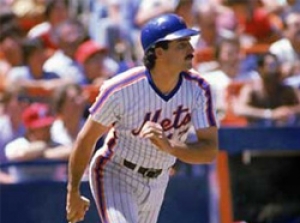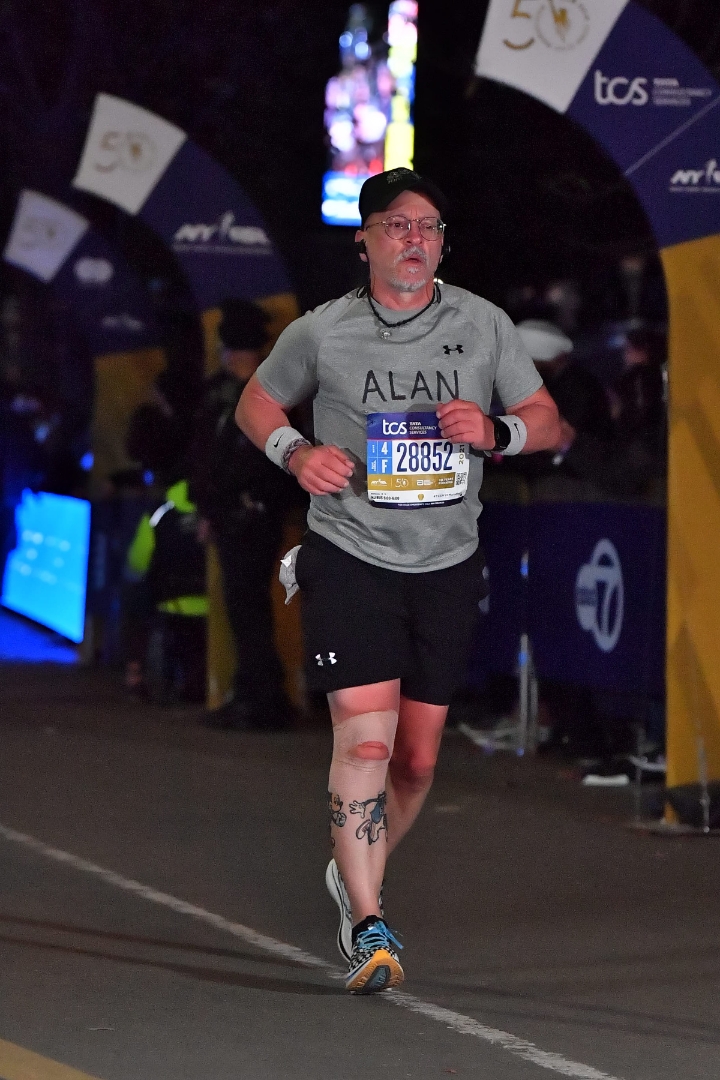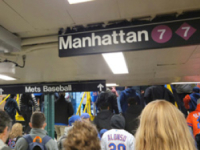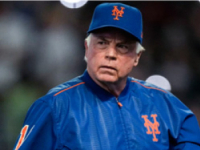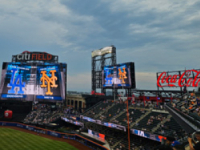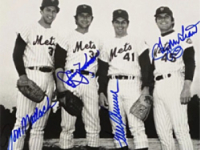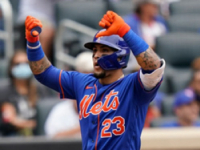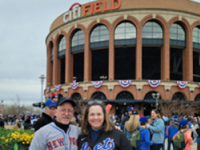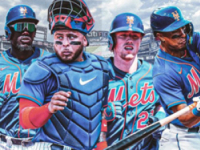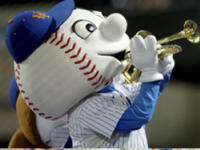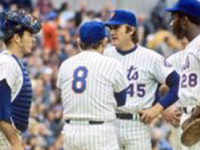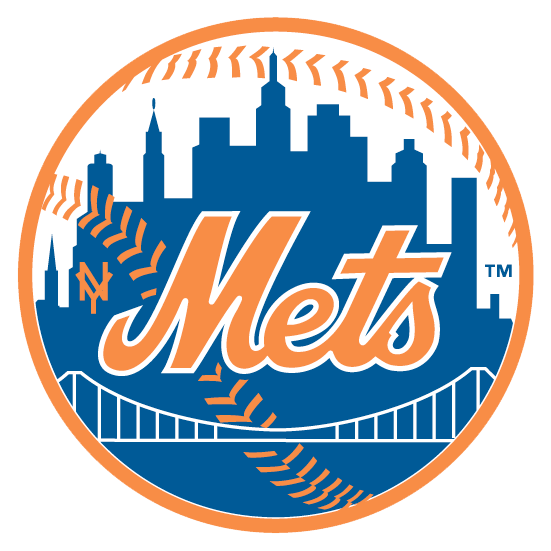Jerry Grote for Tom Parsons on October 19, 1965
It may seem like this trade was insignificant, but it was the beginning of the road to the 1969 World Championship. Jerry Grote was a no-nonsense, hard-nosed smart player. His defensive skills and handling of the young pitching was the foundation for the team’s success.Tom Seaver, who also had Hall of Famers Johnny Bench and Carlton Fisk as his catchers, has called Grote the best backstop who ever caught him. Hall of Fame stolen base threat Lou Brock said that he had to alter his mindset, and take much larger leads at first base, when it was Grote behind the plate. That’s because Grote would throw out 40% of base stealers, and an incredible 40 of 71 in 1969.
Grote was known as an ornery personality, but he was a leader in the clubhouse and loved by the pitchers. His acquisition was a true steal for the Mets.
Gil Hodges for Pitcher Bill Denehy and $100,000 on November 27, 1967
The Mets brought Brooklyn Dodgers star first baseman and original Met Gil Hodges back to New York from the Washington Senators for young pitcher Bill Denehy and $100,000 in cash. Denehy was somewhat of a prospect, but his biggest value turned out to be his 1967 Topps rookie card which may be worth about $100,000 to some collectors. Why? Because he shares it with some other guy named Tom Seaver.
Hodges’ value? Immeasurable. Hodges brought professionalism and integrity to the Mets. He was the “It” factor. Ask any player who played for him. I recently was present at an appearance by some of the 1969 Mets including Cleon Jones, Ed Kranepool, Art Shamsky, and Ron Swoboda. Swoboda admitted that he rebelled and butted heads with Hodges. And as he continued to speak about Hodges, he got emotional and teary-eyed. Tom Seaver, during an interview with Ed Randall of Talking Baseball, had a similar reaction, struggling to keep his composure while talking about Hodges.
Everyone who was ever around Hodges has said that had he not passed suddenly in the Spring of 1972, the Mets fortunes may have been different, very different. It does leave every Mets fan to wonder, “What if…”One last statement about Hodges – it is an absolute atrocity that Gil Hodges is not in the Hall of Fame. His statistics, his dominance, his leadership, his professionalism, etc., are all good enough to gain entrance. His snubbing is an absolute conundrum.
Donn Clendenon for Steve Renko, Kevin Collins, Terry Dailey, Jay Carden, David Colon June 15, 1969
With the Mets making their first push at legitimate contention, Gil Hodges was begging for a power bat for the middle of the lineup. Donn Clendenon had already caused a furor earlier in the year when he refused a trade to the Houston Astros. The Expos, who had just gotten him in the expansion draft from the Pittsburg Pirates with the intention of flipping him to the Astros, were anxious to rid themselves of the veteran to get several younger players. The Mets gave up a useful pitcher in Steve Renko, infielder Kevin Collins and three other players who would never make it at the June 15 trade deadline.
Clendenon proved to be the final piece of the puzzle for the Mets in their Cinderella season. He solidified the lineup supplying power from the right side, he greatly improved the defense at first base, and he was a true leader in the clubhouse. He cemented his name in Mets lore by slugging three home runs against the Baltimore Orioles in the World Series and claimed the MVP honors.He would play another two seasons for the Mets and have one of his best offensive years in 1970, before returning to a straight platoon with Ed Kranepool in 1971.
Jesse Orosco and Greg Field for Jerry Koosman on December 8, 1978
The thought of considering any trade of Jerry Koosman to be a good thing for the Mets would normally be blasphemous. However, with the trading of Tom Seaver during the 1977 season, the Mets fortunes were sinking badly and Koosman was taking some pretty bad beatings, now having to face the No. 1 starters of the other teams and the Mets having absolutely no offense. It became apparent it was time for him to move on. So Koosman was sent home to Minnesota and the Twins returned two prospects to them – one of which was a young lefthander named Jesse Orosco.
Yes, THAT Jesse Orosco. Ironically, while Koosman would record the last out of the 1969 World Series, Orosco would record the last out of the other World Series win the Mets had in 1986. In another touch of irony, Orosco wore No. 47 for his career. What’s ironic about that? While Koosman is most associated with the No. 36 which is rightfully being retired someday soon, most people are unaware that Koosman actually wore, that’s right, No. 47 at the beginning of his Mets career.
Orosco would end up pitching eight seasons for the Mets with a 2.73 ERA and 107 saves, a lot of them in very big situations. He also happened to play a pretty good right field in a long extra innings game when he and Roger McDowell repeatedly switched between the pitcher’s mound and the outfield.
Keith Hernandez for Neil Allen and Rick Ownbey on June 15, 1983
In another trade deadline heist, the Mets stole former MVP Keith Hernandez from the St. Louis Cardinals for relief ace Neil Allen and prospect Rick Ownbey. Allen was tough to give up, but the Mets had Jesse Orosco and Roger McDowell on the way to Flushing. Hernandez became expendable to the Cardinals because former Mets farm director, Whitey Herzog, simply couldn’t stand him.
Hernandez was a professional hitter, solidifying the middle of the Mets batting order with a reliable RBI man with a high on base percentage. But much like it was a joy to watch Ozzie Smith play shortstop for the Cardinals, it as a privilege to watch Hernandez play first base. And he was the captain.
Hernandez played seven seasons for the Mets, hitting .297 finishing his overall career with a .296 batting average, on base percentage of .384, over 2,100 hits and over 1,000 RBI. The fact that he hit only 162 home runs at what is traditionally a power position is truly unfair. He was a great on base guy and he actually walked more in his career than he struck out. You won’t see that in today’s game.
Gary Carter for Hubie Brooks, Mike Fitzgerald, Herm Winningham, Floyd Youmans on December 11, 1984
Fan favorite Hubie Brooks was not a happy camper when he was included as part of the trade to bring All Star catcher Gary Carter to the Mets prior to the 1985 season. The Mets gave up a lot in the package. Catcher Mike Fitzgerald was no longer needed with Carter on the way in, and the Expos would insert him into Carter’s spot in their lineup. But Fitzgerald, of course was no Carter. Brooks would be the hitter that was supposed to replace Carter’s bat, but he, too, was not Carter. Herm Winningham played some good centerfield but didn’t hit enough to stay in the majors. Floyd Youmans was a high school teammate of Dwight Gooden, but could never be compared with Doc and fizzled out after a couple of seasons.
Carter? Well…he was the last piece of the championship puzzle. True, the Mets didn’t win in 1985, falling short of the post season. But they truly dominated in 1986 and Carter’s play and spirit carried the team to their second, and last, World Championship.
Carter would continue his Hall of Fame play with the Mets, but the wear and tear and rigors of catching wore him down by the time his playing days with the Mets were over. He played five seasons with the Mets, his last season cut very short as he only played 50 games due to injury. He hit 89 home runs as Met, a lot of them in some pretty big situations. He went into the Hall of Fame as a Montreal Expo, but he will always be revered as a member of the Mets.
Bob Ojeda, John Mitchell, Tom McCarthy, Chris Bayer for Calvin Schiraldi, Wes Gardner, John Christensen, LaSchelle Tarver on November 13, 1985
During the offseason before the 1986 season, GM Frank Cashen orchestrated a nine-player deal that seemed meaningless at the time. Actually, it was a bit puzzling as he gave up Calvin Schiraldi, a huge pitching prospect in the deal. Wes Gardner was also considered to be pretty good in the pen, while John Christensen and LaSchelle Tarver were players who had nowhere to go with the Mets. The Mets got some pitching depth in return, but not many were fawning over Bob Ojeda who was 9-11 in 1985 with a 4.00 ERA.
With the talent of Dwight Gooden, Ron Darling, and Sid Fernandez anchoring a young talented staff, Ojeda slid in to the fourth spot in the rotation behind Fernandez and in front of Rick Aguilera. Ojeda had a career year for the Mets leading the team with 18 wins with a 2.73 ERA.
Schiraldi? In a touch of irony, he would be the goat in the 1986 series. Well, one of them. Oh, yeah, people remember Bill Buckner. However, Schiraldi blew the save the inning before Buckner allowed Mookie’s grounder to go through his legs.
David Cone, Chris Jelic for Ed Hearn, Rick Anderson, Mauro Gozzo on March 28, 1987
There was not much thought given to it at the time, but when the Mets sent back up catcher Ed Hearn, spot starter Rick Anderson, and minor league pitcher Mauro Gozzo to the Kansas City Royals for catcher Chris Jelic and a young thrower named David Cone is now considered a huge steal for the Mets…perhaps the Mets picked the Royals pocket, and could be viewed as payback for the Joe Foy-Amos Otis trade years earlier?
The package the Royals received would amount to nothing. So would Jelic for the Mets. However, Cone would pay immediate dividends sliding into the Mets rotation and having an amazing season. He won 20 games against only 3 losses with a 2.22 ERA and 213 strikeout.Cone would spend seven seasons with the Mets, winning 81 games and led the league in strikeouts for two consecutive season while compiling over 1,100 K’s while with the Mets.
Mike Piazza for Preston Wilson, Mike Jacobs, Ed Yarnall, Geoff Goetz on May 22, 1998
Mike Piazza’s beef with the Los Angeles Dodgers would have him sent out of LA and banished to the lowly Florida Marlins much like the Mets had done to Tom Seaver years before when they traded him to the Cincinnati Reds. The Mets would be the benefactor this time as the Marlins had no intention of keeping Piazza, as he was going to be a free agent after the season. So they flipped him to the Mets for a package of decent prospects, the best of which was five-tool outfield Preston Wilson, the stepson of Mookie Wilson.
The Mets would end up re-signing Piazza to a long-term deal, at the insistence of then co-owner Nelson Doubleday, so the trade became a true steal for the Mets. Not even Wilson would be an impact player for the Marlins while Piazza would solidify his Hall of Fame credentials in New York and would ultimately become the second player to enter the Hall wearing a Mets cap.
Although Piazza’s number were never up to the levels that he had with the Dodgers earlier in his career, he was the star power in the middle of the lineup, the likes of which the Mets had never had. He hit big home runs in clutch situations and carried the Mets to the 2000 World Series against the Yankees. And he hit one of the most memorable home runs in NYC history, the night baseball returned after 9-11.In his eight seasons with the Mets, Piazza hit .296 with 220 of his 417 career home runs.
Yoenis Cespedes for Michael Fulmer and Luis Cessa on July 31, 2015
It was one of the most talked about periods in Mets history. The non-trade of Wilmer Flores for Carlos Gomez. When that trade collapsed, the Mets turned their attention to the Detroit Tigers who, surprisingly, were looking to unload a talented Yoenis Cespedes. The Mets gave up their top pitching prospect at the time, Michael Fulmer. For the rest of the 2015 season, Cespedes carried the team on his back enroute to the 2015 World Series. In 57 games, Cespedes hit .287 with 17 home runs and 44 RBI. Fulmer would emerge as a top starter for the Tigers, although he has been sidelined with injury.
The stretch run in 2015 is good enough to call the trade a victory for what it did for the Mets. However, Cespedes was resigned not once, but twice (second time his contract was renegotiated) and he has been off the field more than he has been on. And you can’t be a dominant player when you are not on the field. But if we are talking strictly about the trade…then…well…we’ll take it.





